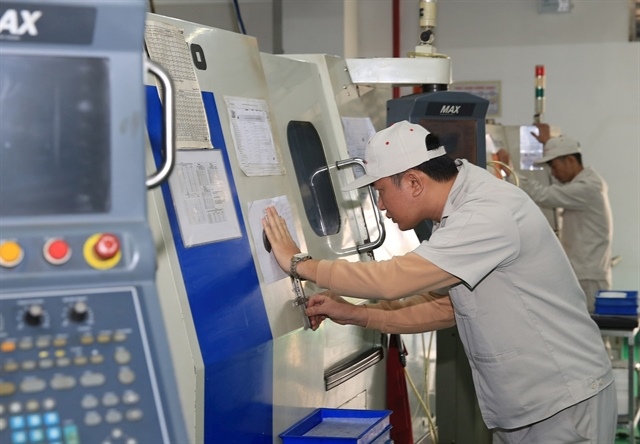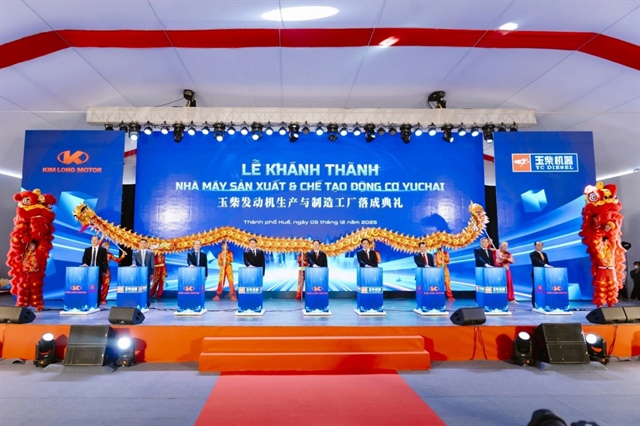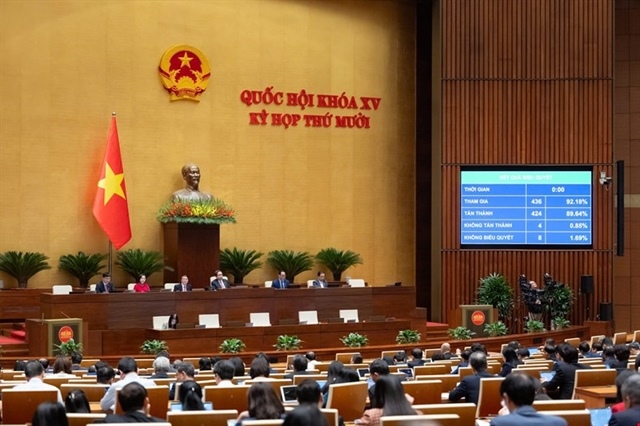Industrial zones are between the devil and the deep blue sea
Industrial zones are between the devil and the deep blue sea
Only 50 percent of the premises in industrial zones (IZ) and 26.4 percent in industrial complexes have been occupied due to the oversupply of industrial zones.
According to Dr Le Tuyen Cu from the Economic Zone Management Department under the Ministry of Planning and Investment, every hectare of leased land brings the industrial production value of 1.6 million dollars a year, while the average agricultural production value is only 600 dollars per annum.
Cu affirmed that the export volume of the enterprises in IZs makes up a big proportion of 20 percent per annum in the total export turnover of the country. On average, one hectare of leased land in IZ in 2010 created an export value of 0.9 million dollars. The figure is really attractive if noting that one hectare of rice fields can bring the export value of 320 dollars.
IZs have generated 1.6 million direct jobs (75 laborers per hectare of leased land), and 1.5-1.8 million indirect jobs. Meanwhile, one hectare of agricultural land can create 10-12 jobs only.
However, the figures only exist on theory. As IZs have been left unoccupied, the land still cannot bring the expected socio-economic effects.
There are 267 operational IZs, which cover 72,000 hectares of land. Meanwhile, the occupancy rate is small at less than 50 percent.
Under the IZ development strategy approved by the Prime Minister, Vietnam would have 558 IZs which would cover a total area of 200,000 hectares.
Besides, by the end of 2009, Vietnam had had 918 industrial complexes, using 40,000 hectares of land. However, only 26.4 percent of the complexes have been leased to investors. Meanwhile, Vietnam strives to have 1872 industrial complexes which would use 76,520 hectares of land.
Many IZs don’t bring much money
Dr Dang Hung Vo, former Deputy Minister of Natural Resources and the Environment, said that it is really a worrying problem that the occupancy ratio in IZs remains too low.
Vo pointed out that in fact, local authorities have allocated to investors too much land for non-agricultural production projects, which has led to the redundant premises in IZs.
The National Assembly, for example, allowed local authorities to allocate 44,000 hectares of land in 2010. However, the actual allocated land area reached 93,000 hectares, or exceeding the allowed level by 211.36 percent.
Le Quoc Dung, former Deputy Chair of the National Assembly’s Economics Committee, has pointed out that it is necessary to re-program the IZ development. In principle, Vietnam needs to restrict the use of the rice field land and strives to obtain the highest possible efficiency with the lowest possible land area used.
Cu said that in adjusting the strategy on IZ development by 2015-2020, local authorities should not allow to set up IZs on the rice field land which has stable rice yield. Especially, they should say “no” to the projects which attempt to carry out non-agricultural production activities on the current rice fields.
Dr Vo Hung Dung, Director of the Can Tho Branch of the Vietnam Chamber of Commerce and Industry VCCI, has pointed out that seafood, garment workshops have been set up in every IZ, while there is no specific IZ gathering the enterprises in the same business fields.
Vo Thanh Hung, a senior official of the Can Tho City’s authorities, also said that the establishment of IZs in masses has led to the big waste of land and human resource.
vietnamnet




















